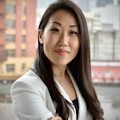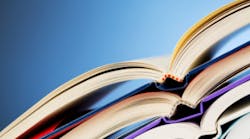Stop reading your textbooks the ineffective way
Fifteen-plus classes, clinical exams, and board exams . . . the dental hygiene student is extremely overworked and stressed. If you are a student, you are probably putting in long hours reading your textbooks. But when you are about to take a quiz, you might feel like you have a hole in your brain. In this article, you will learn how to work less while being more effective through methods I teach at StudentRDH dental hygiene boards prep solution.
Studying is a skill that can be learned. Think about Serena Williams, the famous tennis player. Serena did not become a champion overnight. She trained physically and mentality. She mastered the skills of serving, one ball at a time. She mastered sprinting one run at a time. Serena has won a record 23 Grand Slam titles, and she still trains. Now, let’s get into the mentality of training like Serena, which means training deliberately and strategically.
Here are three strategies to actually retain what you read in your textbooks:
1. Read the titles first, create a blueprint in your head, and then read line by line.
Titles are like the blueprints of a house. An architect thinks about the big picture and then creates spaces such as the three bedrooms, one kitchen, etc. When the structure has been created, the architect then creates the details. The same strategy applies to reading your textbooks. By reading the titles (and subtitles), you are mentally creating neat compartments that will store details. And because you read the titles first, your brain naturally creates links between the components.
Here is an example. If you are reading about fluoride, identify the components, such as fluoride varnish, fluoride rinse, fluoride foam, water fluoridation, etc. Then read each section. It takes two more minutes to understand the “blueprint,” but the results can be very impressive.
2. Find keywords for each sentence and dismiss the fillers.
Let’s look at this sentence from a dental hygiene textbook: “Ankyloglossia is caused by the lingual frenum being attached too high. This condition can lead to lingual gingival recession and speech impairment.” In this sentence, the keywords are “ankyloglossia,” “frenum,” “high,” “recession,” “speech (impairment).” As you can see, what we really need to know in this 22-word sentence can be reduced to five words. The rest of the sentence, such as “caused,” “by,” “being,” etc. can be considered fillers.
By focusing on the keywords, you are reducing the background noise that takes up unnecessary space in your brain. Also, when you use a highlighter, highlight only those keywords. This can help you mentally, because too much highlight can cause anxiety.
3. Use memory tricks and create stories.
You have over 20 textbooks to read in dental hygiene school. Your brain is overloaded with information. Unless we store this precious knowledge properly and systematically, everything will pile up and become tangled. To prevent chaos in your brain, use memory tricks actively.
For example, the appearance of an aphthous ulcer is characterized by a yellow interior and red borders. At StudentRDH, I teach the WakeUp Memory Technique (WMT), and it goes like this: Imagine that it is apple-picking season. You bring your family to visit a farm, and you find a beautiful red apple on a good-looking tree. You take the apple and bite into it. But, unlike what you expected, the apple is sour and hard! And now, look! You have an ulcer on your lower lip. The WMT guides you to connect red apple and red halo, which also leads you to know that the inside of the ulcer is yellow like the flesh of an apple.
I have seen extremely positive results from students who actively used the memory tricks. I hope I have encouraged you to see that memorizing can be fun and effective.
As you can see, there are strategies to textbook reading. In the beginning, it will not be easy to implement all three strategies at once. However, do you remember the example of Serena Williams? She practiced with intention and focus. If you keep trying, you will see results. Who wants better grades and peace of mind that you will pass the quizzes and the dental hygiene board exams? I bet you do! One hour of focused and strategic reading can equal 10 hours of repeated nonstrategic reading. Lastly, never forget that your mind is ready to tackle any challenges.
Continue to always want to learn!
About the Author

Claire Jeong, MS, RDH
Claire Jeong, MS, RDH, is an entrepreneur, author, educator, researcher, and international speaker. She is the founder of SmarterDA/StudentRDH–dental assisting and dental hygiene exam prep solutions. Through her live and online courses, Claire has helped thousands of people gain valuable dental knowledge and clinical skills. She authored the e-book WakeUp Memory, which teaches how to use the brain and remember anything. Claire is regularly invited to podcasts and conferences as a key opinion leader. She also provides guidance to companies to reach the younger generation of dental professionals. Email her at [email protected].

